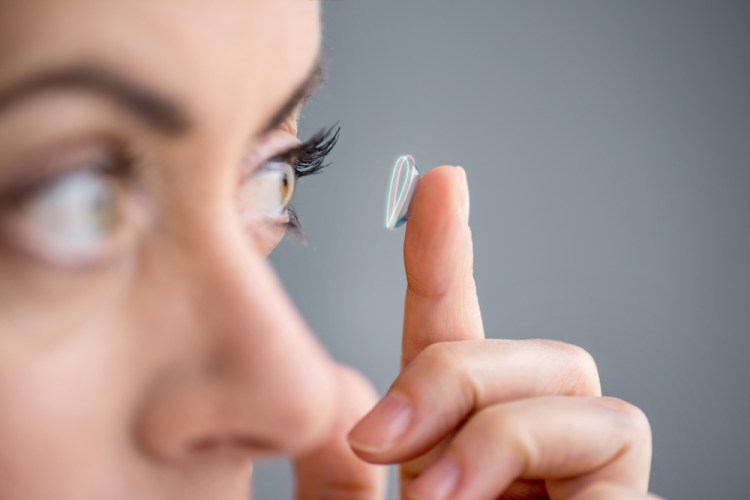Yes, today is Google Glass Day, a single planetary rotation when anyone in the U.S. with an extra $1,500 can buy the questionably smart headgear. But is Google’s ultimate head-wearable actually a set of whizbang contact lenses?
Although Glass’ general release date is not yet known, Google is keeping the device fresh with updates. Yesterday, the connected head peripheral got upgraded with the latest Android version, called KitKat.
Also, Google noted that video calls are out (at least until there’s a better user experience), Photo Bundles (which organizes media by day) are in, and voice commands can now be sorted by frequency,
In January, the company announced new eyeglass frames for Glass that can hold prescription lenses, preventing the extra-nerdy possibility of a nearsighted owner having to balance their own glasses on top of Glass.
But Glass may only be the prototype frame for Google’s endgame: intelligent, media-recording, connected contact lenses.
In March, Patent Bolt brought Google’s 2012 patent application to light for a “multi-sensor contact lens” computer system that can work as a peripheral for a smartphone, TV, or game console. Sensors in the lenses can track blinks very accurately, which could be used as a control gesture. Blink to go the next song on your playlist, for instance.
That patent application also mentions other kinds of sensors integrated with the lenses, including a photodiode, a pressure sensor, a conductivity sensor, a temperature sensor, and an electric field sensor.
On Sunday, another Google patent application surfaced, covering the integration of very small cameras into contact lenses. This one is obviously part of the same vision — so to speak — as the multi-sensor contacts, since the camera can be controlled by blinking patterns.
The contact lenses’ image capture can follow the user’s gaze, and the image data can be used to detect light, colors, objects, faces or motion. The lenses could also be used by blind people, since the system might detect dangerous moving objects. Or it could function to some degree as a zoom.
These are not the only indications that Google is thinking about contact lenses. A blog posting in January, for instance, highlighted its smart contact lens project, which is now in the testing stage. The lens, the company said, is “built to measure glucose levels in tears using a tiny wireless chip and miniaturized glucose sensor that are embedded between two layers of soft contact lens material.”
Sure, glucose-savvy, blink-aware, and camera-ized contact lenses could be far down the list of the tech giant’s many projects. So far down, in fact, that such lenses may never help us see the light of day.
But, on the other hand, do you think Googlers really want to be wearing the Glass nerdware for the rest of their lives?
via Patent Bolt


